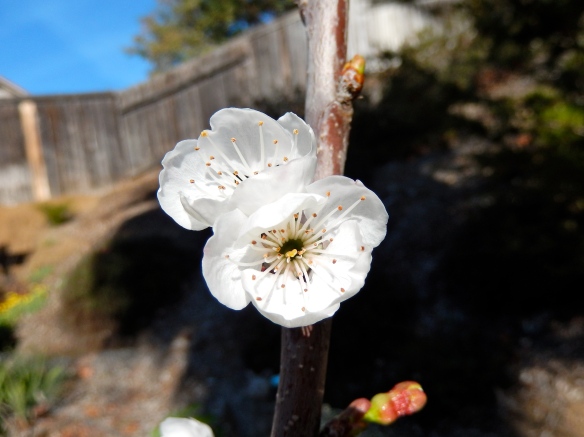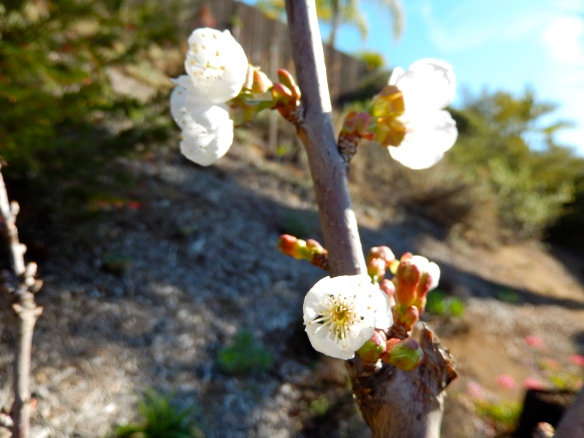 Here’s my great Lifetime Raised Garden Bed bursting with heirloom tomatoes, golden beets, lettuce and Cosmic Purple carrot seedlings along the left perimeter.
Here’s my great Lifetime Raised Garden Bed bursting with heirloom tomatoes, golden beets, lettuce and Cosmic Purple carrot seedlings along the left perimeter.
The other day I planted some marigolds in and around my veggie beds. I’ve read that annual marigolds can be used anywhere to deter Mexican bean beetles, squash bugs, thrips, tomato hornworms, aphids and whiteflies. They are also known to repel harmful root knot nematodes (soil dwelling microscopic white worms) that attack tomatoes, potatoes, roses, and strawberries. The root of the Marigold produces a chemical that kills nematodes as they enter the soil. Plus they add a pop of color!

Now that Spring is in full swing and the soil is consistently above 50 degrees, I am direct sowing seeds into the garden. In this bed I have various tomatoes, lettuce, Di Cicco broccoli, golden beets and some cabbage that is ready to harvest. The other half of this bed is below:
 The Sharpblue blueberry at the bottom of this photo is doing very well since I planted it in January. Above it along the vertical trellis are lemon cucumbers and pole green beans. In the middle of the bed are edamame and broccoli.
The Sharpblue blueberry at the bottom of this photo is doing very well since I planted it in January. Above it along the vertical trellis are lemon cucumbers and pole green beans. In the middle of the bed are edamame and broccoli.

My Persimmon and Pineapple heirloom tomatoes that I purchased as seedlings are doing well in terms of growth, but are both experiencing blossom drop and early blight. Damp, cool weather can create a fungus on tomatoes called early blight, which looks like small dark spots on the lower leaves. I’ve never dealt with this issue before, but after some research, I have trimmed the most infected lower leaves and sprayed the entire plant with an organic copper solution. I also sprayed a calcium spray on the flowers, which is supposed to help prevent blossom drop. They could also be dropping due to damp conditions. So much to know! Once the weather corrects itself, so the speak, the tomatoes may pull out of it.

Here's one other tomato falling victim to early blight. You can see how I've trimmed out the lower effected leaves.
 I’ve also been battling significant potato problems. I had my heart set on growing sweet potatoes this summer, but we’ll just have to see on that. Maybe next year! I thought that a rodent of some kind was gnawing the foliage due to the significant breaks on the stems, so we put chicken wire around the grow pot. The no avail, it’s still worsening. I went out last night to check out the situation, hoping to catch the varmint and only saw slugs. Could they be doing all of this?? I will probably have to prematurely dig up my potatoes. I’m not sure how they can survive this. Hopefully it’ll at least be a small crop since they’re been growing since December.
I’ve also been battling significant potato problems. I had my heart set on growing sweet potatoes this summer, but we’ll just have to see on that. Maybe next year! I thought that a rodent of some kind was gnawing the foliage due to the significant breaks on the stems, so we put chicken wire around the grow pot. The no avail, it’s still worsening. I went out last night to check out the situation, hoping to catch the varmint and only saw slugs. Could they be doing all of this?? I will probably have to prematurely dig up my potatoes. I’m not sure how they can survive this. Hopefully it’ll at least be a small crop since they’re been growing since December.
All within the last week I’ve planted from seed:
- Moon and Stars Watermelon
- Charentais melon
- Red Warty Thing pumpkins
- Fairytale pumpkins
- Jarrahdale pumpkins
- Sunburst yellow / Peter Pan green pattypan scallop summer squash and ………drumroll please………..
- Alpine Strawberries!!!!!!!!!!!!!
I’ve heard that growing strawberries from seed can be trying and difficult (they take 3-4 weeks to even sprout!), but when I saw their seed packet today at the nursery, I could not resist. I asked the garden specialist what she knew about growing them from seed and she laughed, saying, “We don’t even carry them. You may want to just but a six-pack.” Then I showed her the packet in my hand and she was shocked! It’s the first time I’ve ever seen them in any store. They’re already out in the garden, working their magic. I’ve got a good feeling!
 Somehow the chickens seem to know when I need a new picture of them doing something endearing because yesterday they were posing like pro’s. These birds of a feather really do love to flock together. Last week every one of my white Silkies were broody and our sweet Ameraucana Henrietta didn’t leave the coop, not even for a minute, to venture by her lonesome out in the grass which she loves so much. Now that they’re back to their pecking, egg laying-gang status, they don’t leave each other’s sides.
Somehow the chickens seem to know when I need a new picture of them doing something endearing because yesterday they were posing like pro’s. These birds of a feather really do love to flock together. Last week every one of my white Silkies were broody and our sweet Ameraucana Henrietta didn’t leave the coop, not even for a minute, to venture by her lonesome out in the grass which she loves so much. Now that they’re back to their pecking, egg laying-gang status, they don’t leave each other’s sides. The Minnie Royal Cherry tree has begun to bloom! It’s pollinator sister, Royal Lee, is not quite blooming yet, but I’m hoping they’ll cross blooming schedules at some point to possibly produce some of my first cherries this spring.
The Minnie Royal Cherry tree has begun to bloom! It’s pollinator sister, Royal Lee, is not quite blooming yet, but I’m hoping they’ll cross blooming schedules at some point to possibly produce some of my first cherries this spring.































